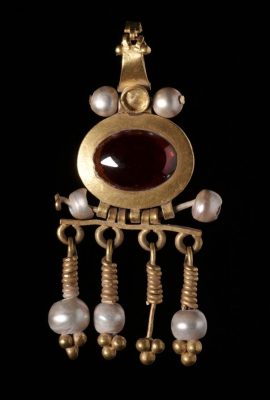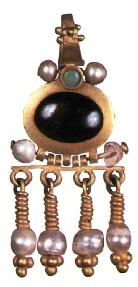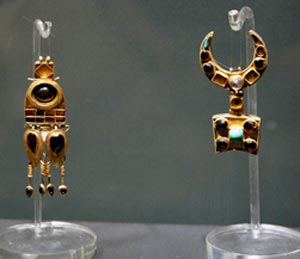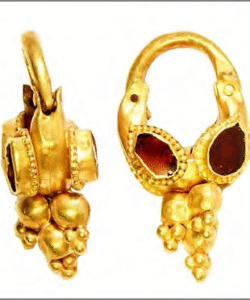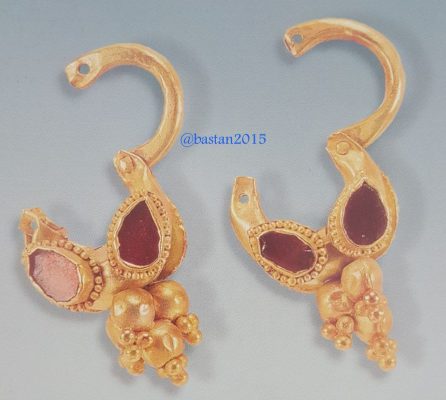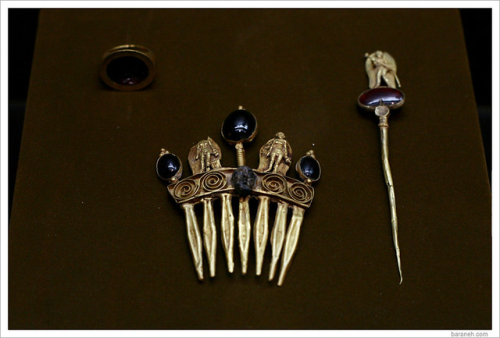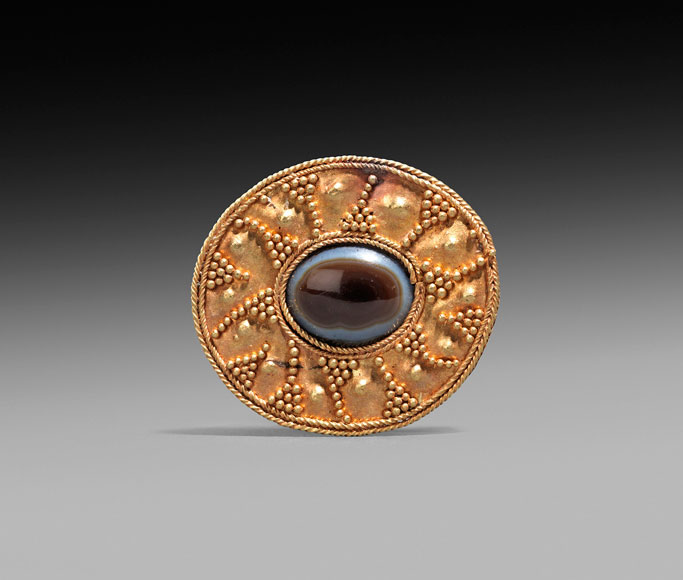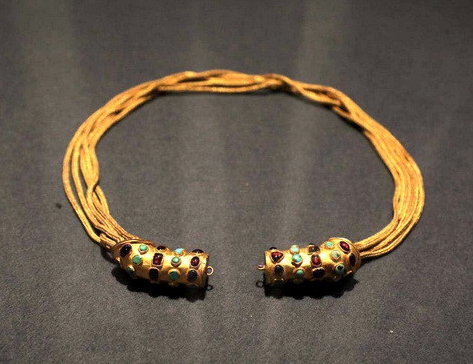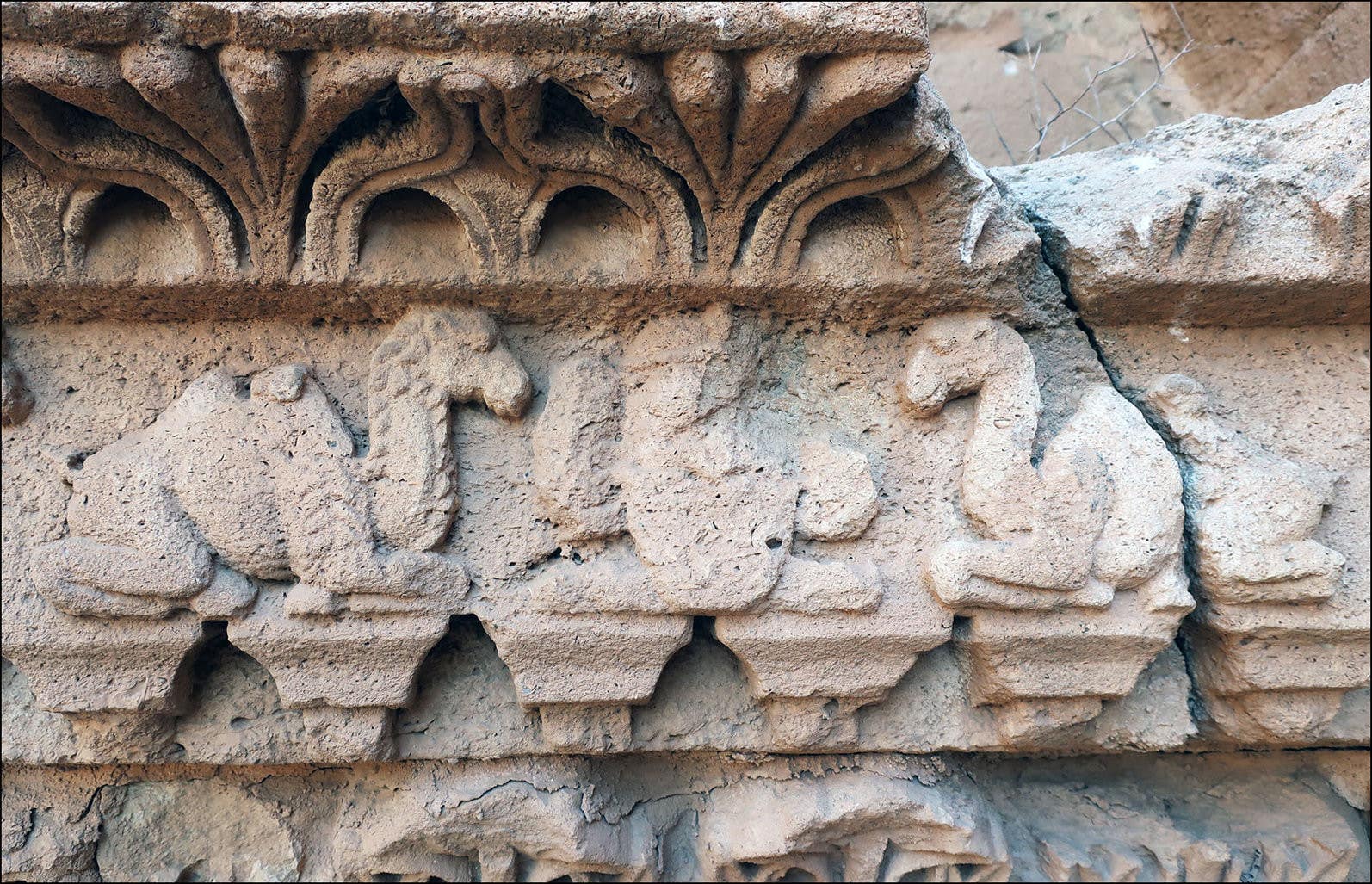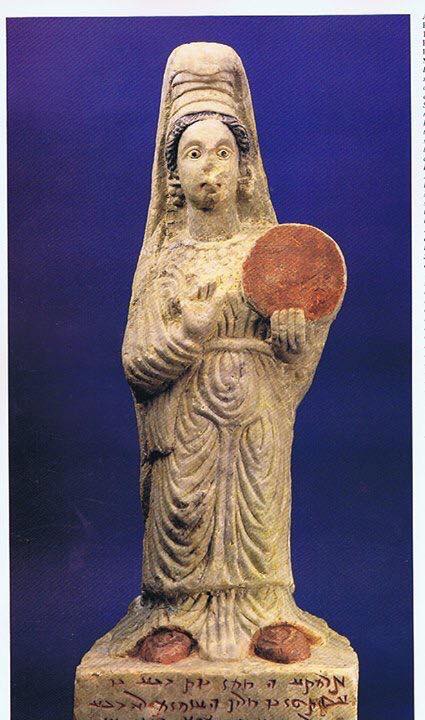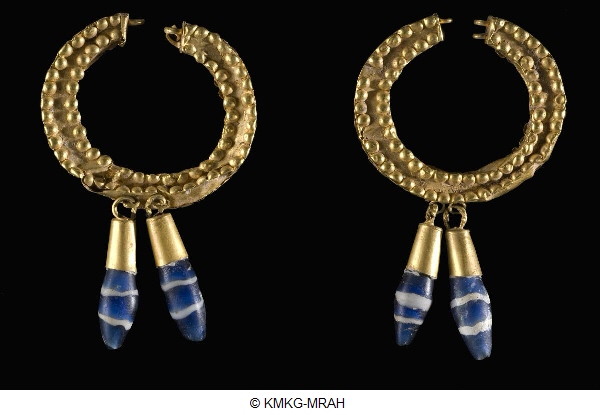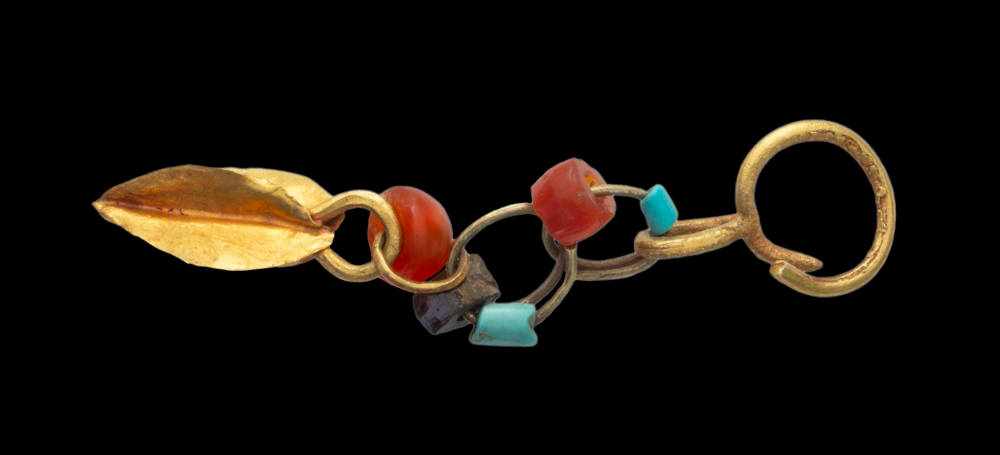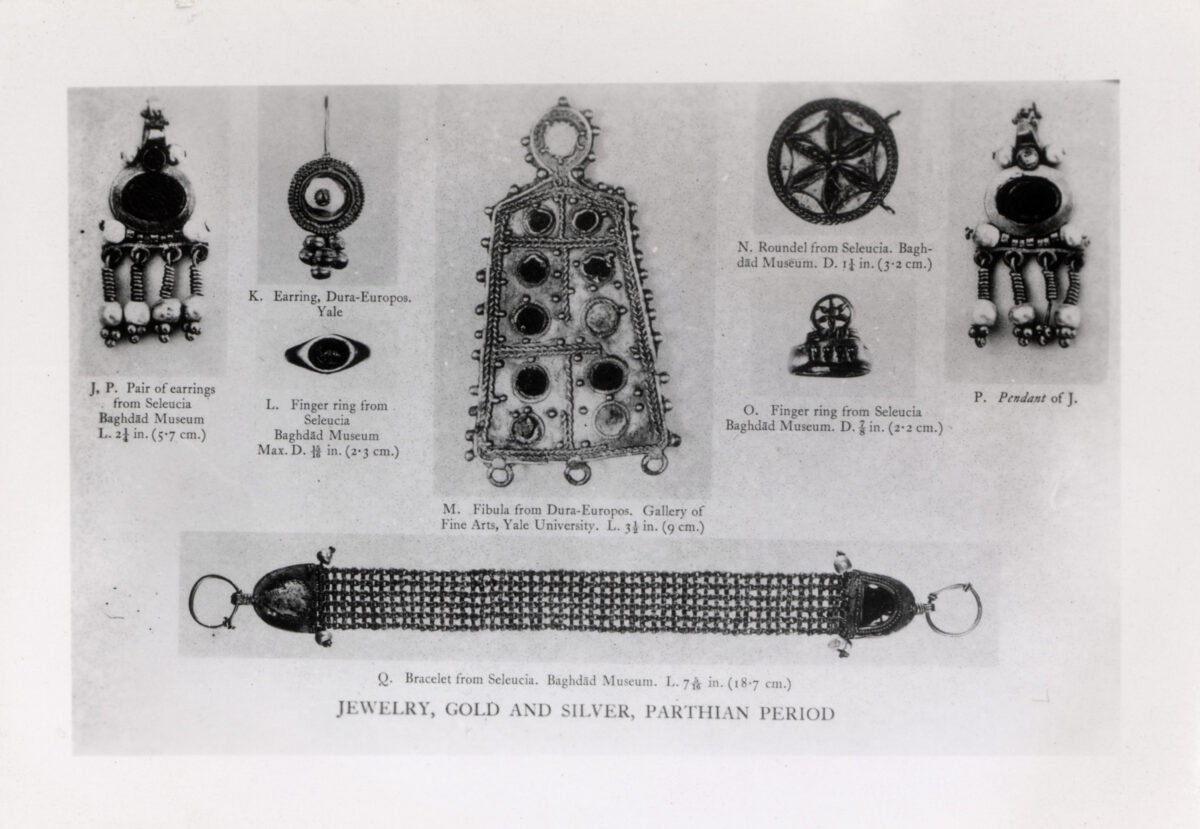
One of the characteristic type of Parthian earrings has the form of a star-shaped box inlayed with gemstones, garnets mostly, and with the bell-shaped pendants on chains. Judging by the large number of surviving pieces, such earrings were produced on a mass scale.
Pair of such earrings is in the collection of museum in Leiden [B 1982/6.42, B 1982/6.43]. Made of gold are decorated with garnets, blue and white stones, and tiny gold granules. They are 4.5 and 5 cm long. Parthian Period 250 BCE-224 CE, Iran.
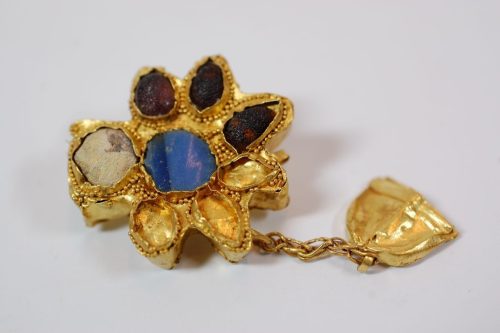
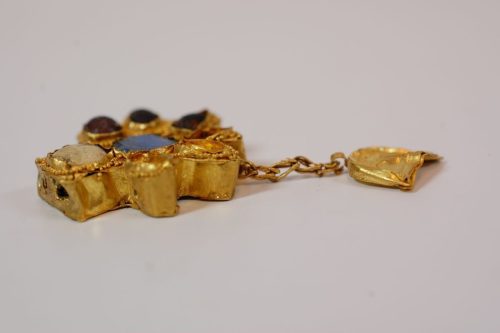
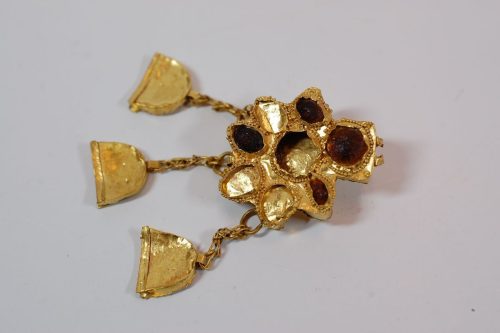


Parthian earrings, 1st to 2nd century.
Gold, garnet; length: 50 and 51 mm (including danglers); width: 25 and 24 mm

British Museum, Inv. no. 132933



Pictures: 1., 2. ©Sailko [wiki]
3. https://www.romeartlover.it/Persia.html

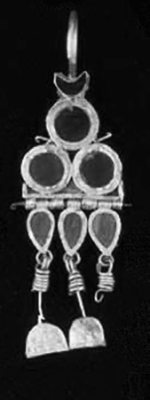
Gandhara, 1st-2nd century [Buddhist Jewels]
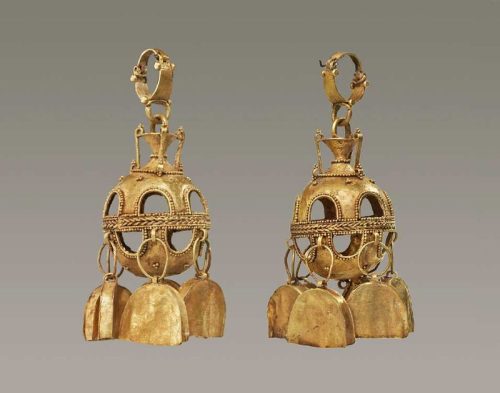
http://www.alaintruong.com/archives/2008/10/03/10807511.html
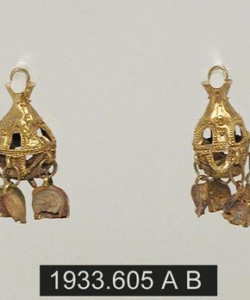
https://artgallery.yale.edu/collections/objects/34591
Gold earrings with the pomegranate-shaped pendants. Seleucia [Iraq], 1st-2nd century
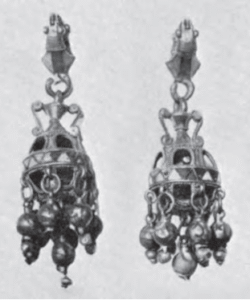
Lit. for an earring in Toledo
https://lsa.umich.edu
Dieter Quast, PARTHIAN AND EARLY SASANIAN EARRINGS
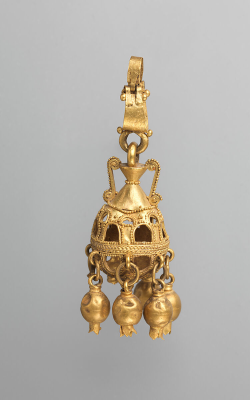
L: 5.7 cm
Metropolitan Museum metmuseum.org
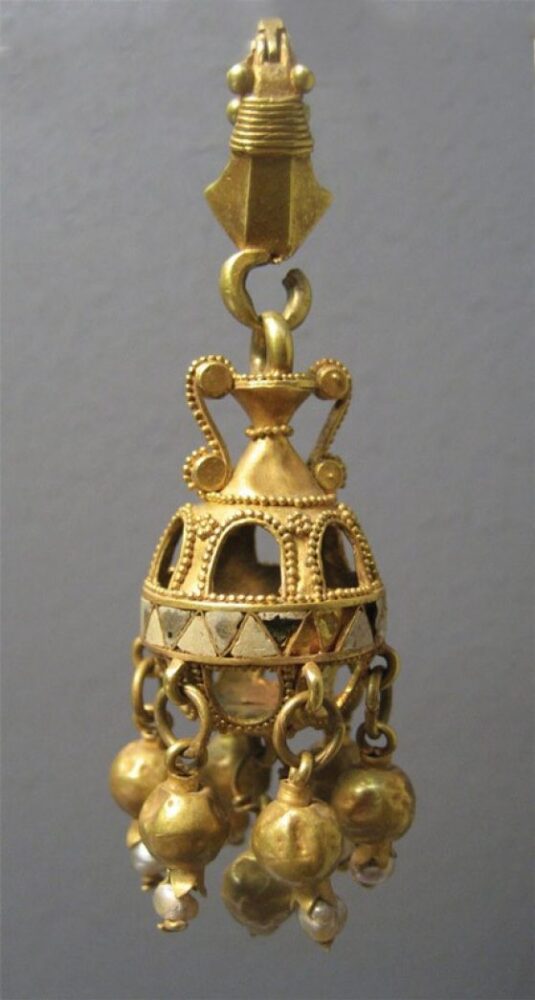
American excavations at Seleucia, Iraq 1931
Photo source https://lsa.umich.edu
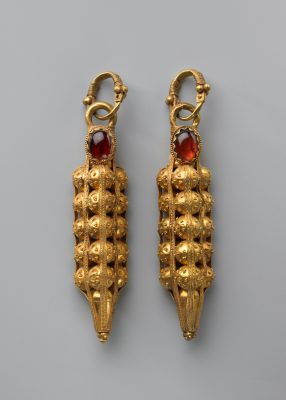
Private Collection, North America
Photo ©Toledo Art Museum
https://detroitartreview.com
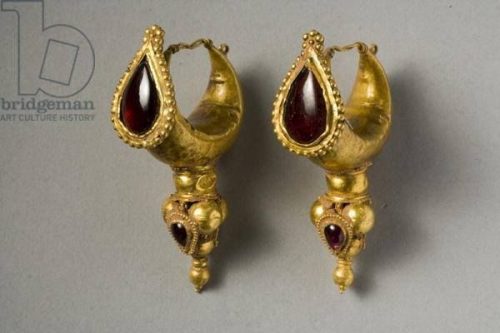
Photo © Heini Schneebeli / Bridgeman Images
Parthian jewelry 1st-3rd century.
National Museum of Iraq, Baghdad
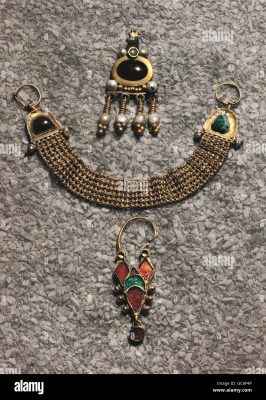


Headband, from Seleucia-on-the-Tigris / ‘Umair. Parthian era, 2nd century BCE/CE.
Gold, garnet, malachite and pearls. L. 18.5 cm, w. 2.5 cm.
IM 19956, (B78-189)
Dwa kolczyki / zausznice [zdjęcia poniżej] wydające się być parą znajdują się w dwóch muzeach. Pierwszy został znaleziony w trakcie prac archeologicznych połączonej misji Amerykańsko Irackiej w 1933 roku prowadzonej na terenie Seleucji nad Tygrysem i obecnie jest w posiadaniu muzeum w USA. Drugi kolczyk pochodzi z kolekcji muzeum w Iraku.
Czarno-białe zdjęcie po prawej przedstawia, jak się wydaje kolejną, prawie identyczną parę kolczyków.
Lit.: Hollis, Howard C. “Material from Seleucia.” The Bulletin of the Cleveland Museum of Art 20, no. 8 (1933): 129–31 http://www.jstor.org/stable/25137571
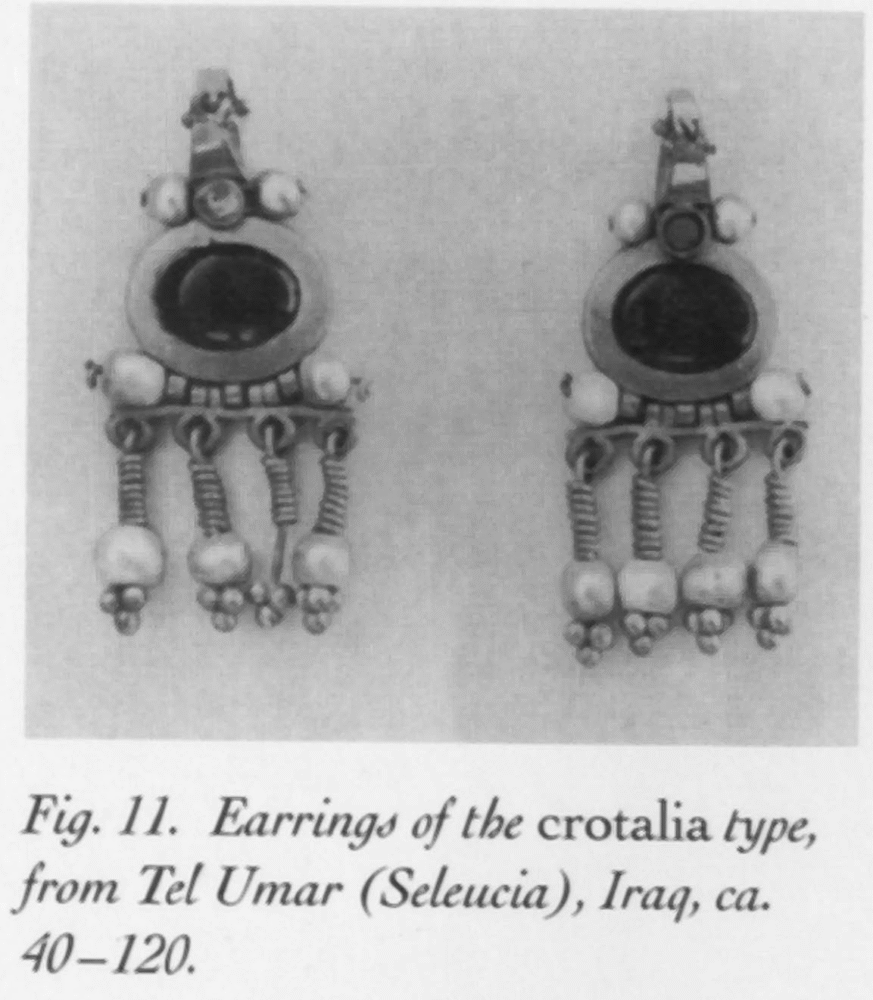
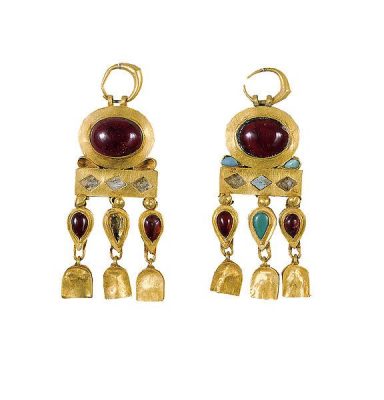
British Museum link
2nd C; Iraq, Kouyunjik (Nineveh)

Museo nazionale d’arte orientale (Rome)
Photo by Sailko [wiki]
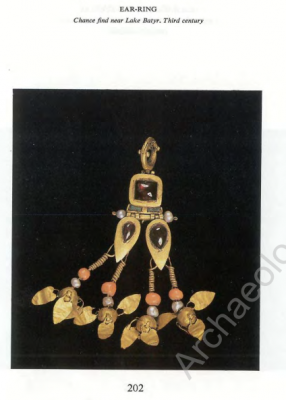
Akishev A.K., Ancient gold of Kazakhstan, 1983
Ажигали С.Е., Очерк культурного наследия Арало-Каспийского региона http://j-spacetime.com
JEWELRY FOUND IN HATRA
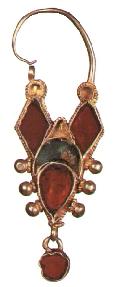
Earring with cloisonné pendant. From Hatra / al-Hadhr.
1st-2nd century
Gold, garnet, green glass? L. 6 cm.
Museum if Iraq, Baghdad, IM 68096, (B78-185)
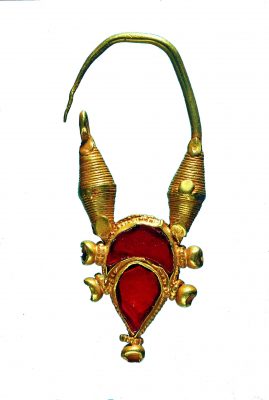
a double-face earring with a hook; gold and garnet; cloisonné and granulation; L. 4.5 cm. From Hatra, Building A, central courtyard. 2nd-3rd century
Pendant found in Hatra at the North Gate. Gold and garnet, 2nd-3rd century. Collection of the Iraq Museum, Baghdad.
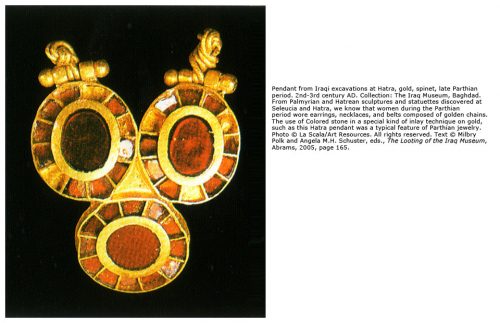

To compare

Georgian National Museum link
Earrings, gold, garnet, 6.6 x 2 cm;
2nd-3rd century, site: Armaziskhevi

Found: Pichvnari, Colcian cemetery, Georgia
Batumi Archaeological Museum Collection Inv. № 1:12/136, 47-48
Photo source source
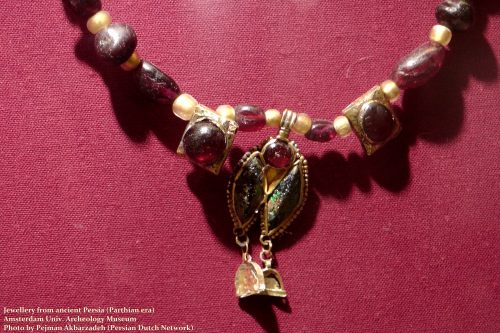
Amsterdam Archeology Museum (Het Allard Pierson Museum) Photo by Pejman Akbarzadeh (Persian Dutch Network, 2012) [wiki]
Lit.:
1.Gids voor de afdeling West-Azië, Allard Pierson Museum Amsterdam, Plate III, page 90 https://www.exorientelux.nl
2.Dieter Quast, PARTHIAN AND EARLY SASANIAN EARRINGS WITH GARNET INLAY https://www.academia.edu
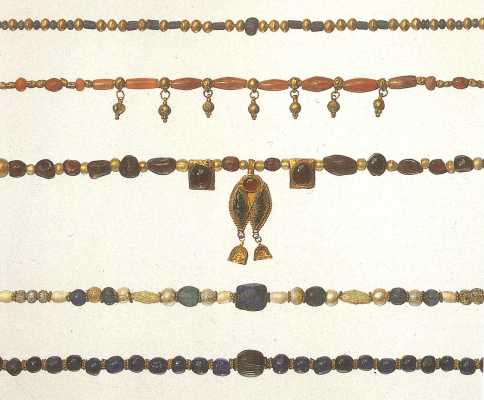
Jewelry from the female burials at the Parthian cemetery, Joben, Guilan province, Iran [southwest of the Caspian Sea]
“During the archeological excavations carried out in the Parthian cemeteries of Gilan province, a collection of jewelry made of gold, silver, bronze, iron and stone was found, which reflects the art and culture of the tribes living in this region in the Parthian period.”
Read the article >> Ali Hakemi, “JUBAN,” Encyclopædia Iranica, XV/1, pp. 85-87, available online at http://www.iranicaonline.org/articles/juban (accessed on 30 December 2012).

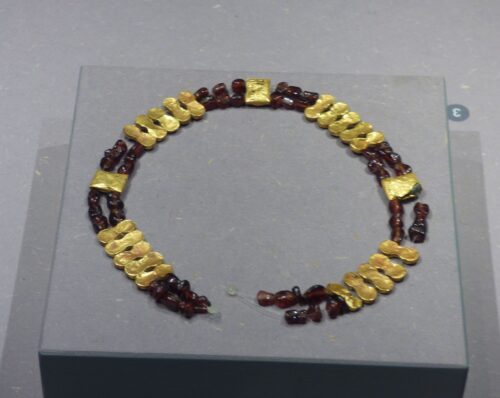
Necklace 1) (L. 28 cm, weight 13.2 g) of gold and red semi-precious stones [garnets] from Joben, Guilan province, Iran.
Parthian period, 250 BCE – 224 CE.
It is exhibited in the National Museum of Iran no 3871
[van Vilsteren]

Necklace 2) garnet and gold. Weight 17.3 g. from Joben, Guilan province, Iran.
Parthian period, 250 BCE – 224 CE.
National Museum of Iran no 3861
Lit.:
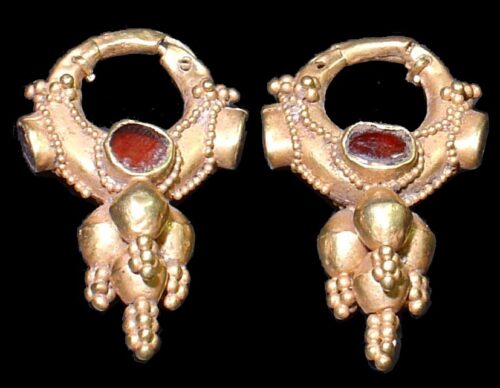
Earrings / Temple earrings.
Gold and 4 garnets [?]. Weight 20.8 g
From Joben, Guilan province, Iran; female burial
National Museum of Iran no 3856
Earrings / Temple earrings.
Gold and 4 garnets [?]. Weight 12 g
From Joben, Guilan province, Iran; female burial
National Museum of Iran no 3887
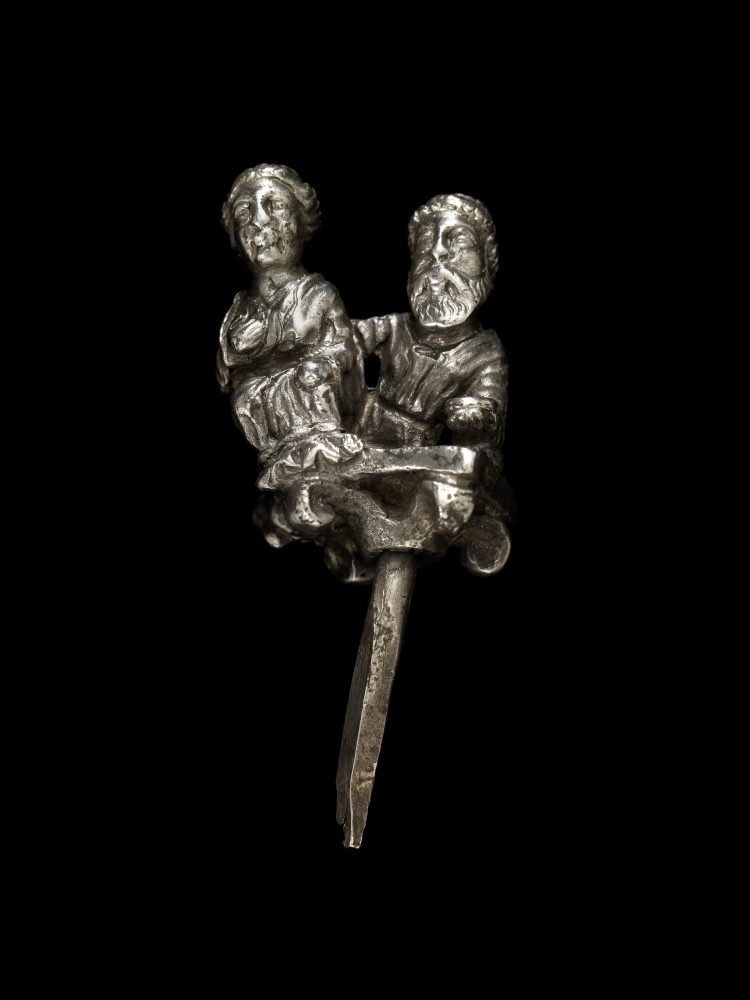
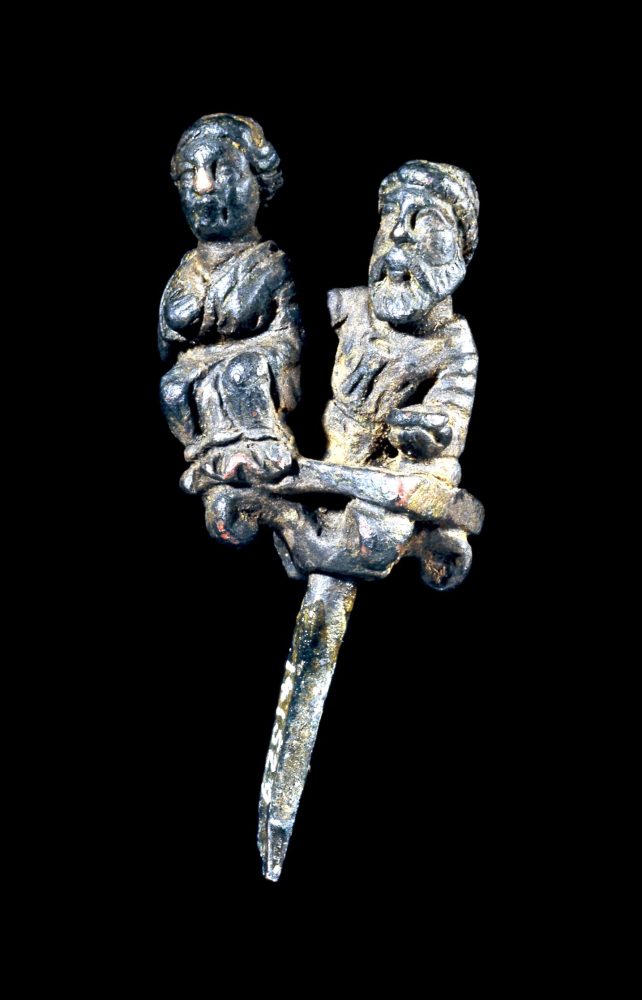
The silver pin, Parthian, 250-300 CE. A scene similar to the funeral reliefs like ones from Palmyra for example. Reclining man holding a bowl, in front of him seated woman. Found Masjid-i Suleman, Iran
At the Reza Abbasi Museum (Tehran, Iran) there is a wonderful unique set from the Parthian era with a clear Greek influence. A comb with a pair of Erotes & a mysterious face, and a hair pin with goddess Nike, made of gold with carnelian. Some stones /inlay are missing.

Double-sided pendant
Late Parthian, 3rd century
Gold, garnet, glass; 41 x 30 mm
The Morgan L&M, Thaw Collection 2012.2:10 [link]
Sassanid jewelry, 3rd-6th century.
National Museum of Iraq, Baghdad

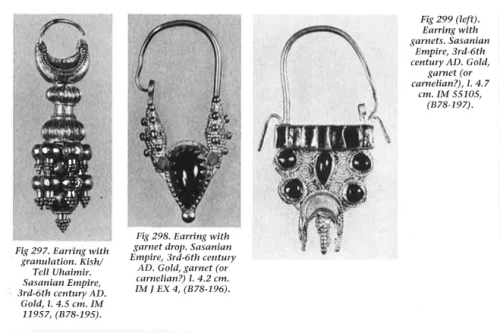
- Analysis of discovered jewelry from Parthian cemeteries in Guilan province, the result of scientific archaeological excavations; Soheil Ahmadi Vastani, Jabriel Nokandeh, Mostafa Dehpahlavan; Athar,. 43(2), 314-327
- Dieter Quast, PARTHIAN AND EARLY SASANIAN EARRINGS WITH GARNET INLAY https://www.academia.edu
- Buddhist Jewels in Mortuary Cult Magic Symbols, Arputharani Sengupta https://www.academia.edu/39589580/Buddhist_Jewels_in_Mortuary_Cult_Magic_Symbols
- Minerva 2003, Vol. 14. No. 4, pp. 9-40.
“Mesopotamia – masterworks and minor works from the Iraq Museum”
Jerome M. Eisenberg - V.T. van Vilsteren and J. Nokandeh (eds), Iran: Bakermat van de Beschaving [Iran – cradle of civilization]. Catalogue of exhibition at Drents Museum, Assen 2018 https://www.academia.edu
- Gids voor de afdeling West-Azië, Allard Pierson Museum Amsterdam, https://www.exorientelux.nl/download/phoenix34_1.pdf
- Wathiq Al-Salihi, The Archaeology of Hatra, the Sacred City
Related topic

